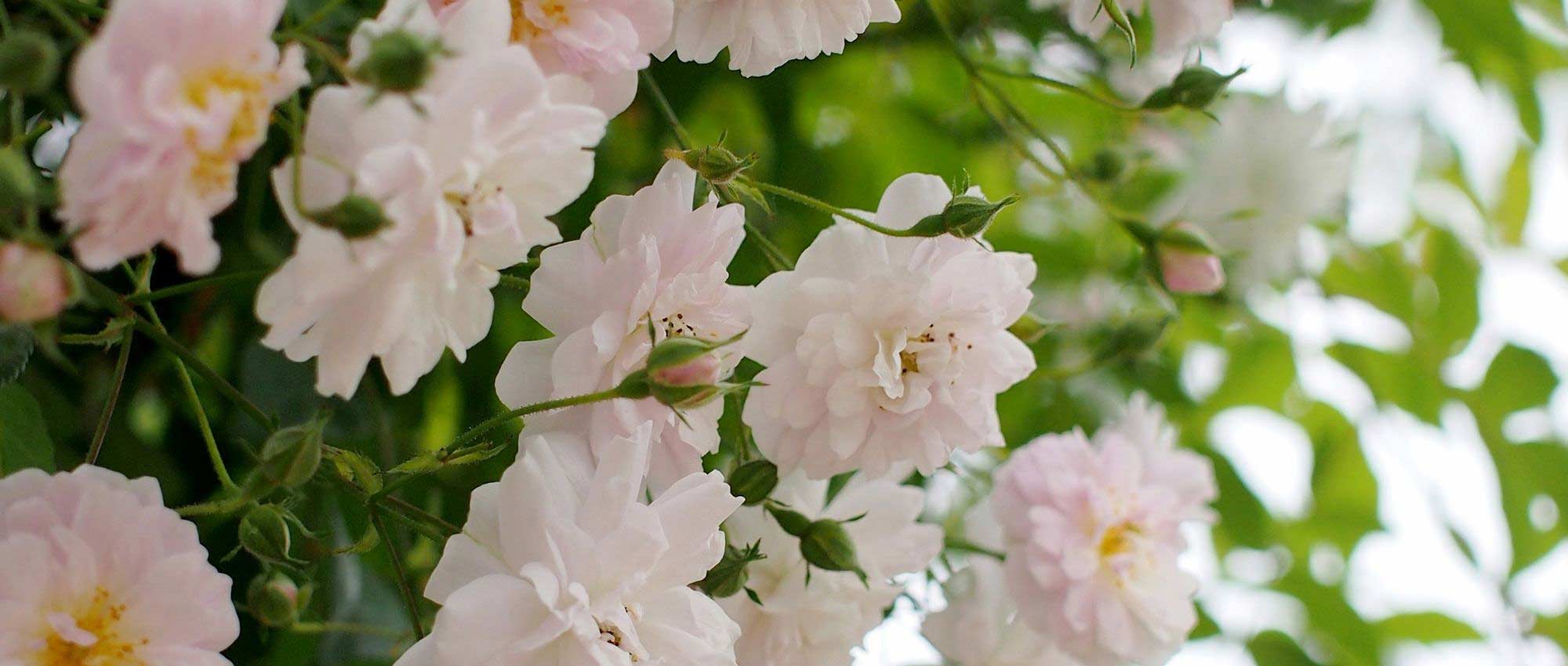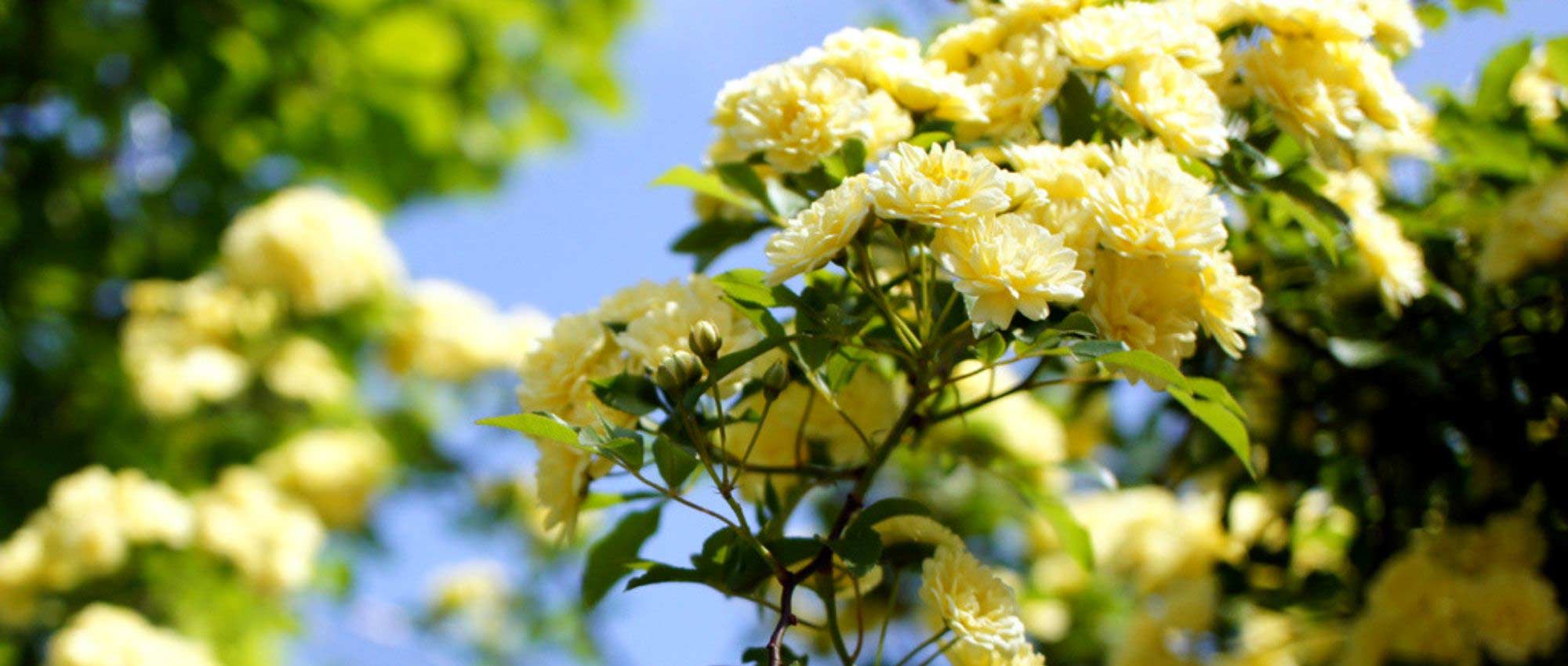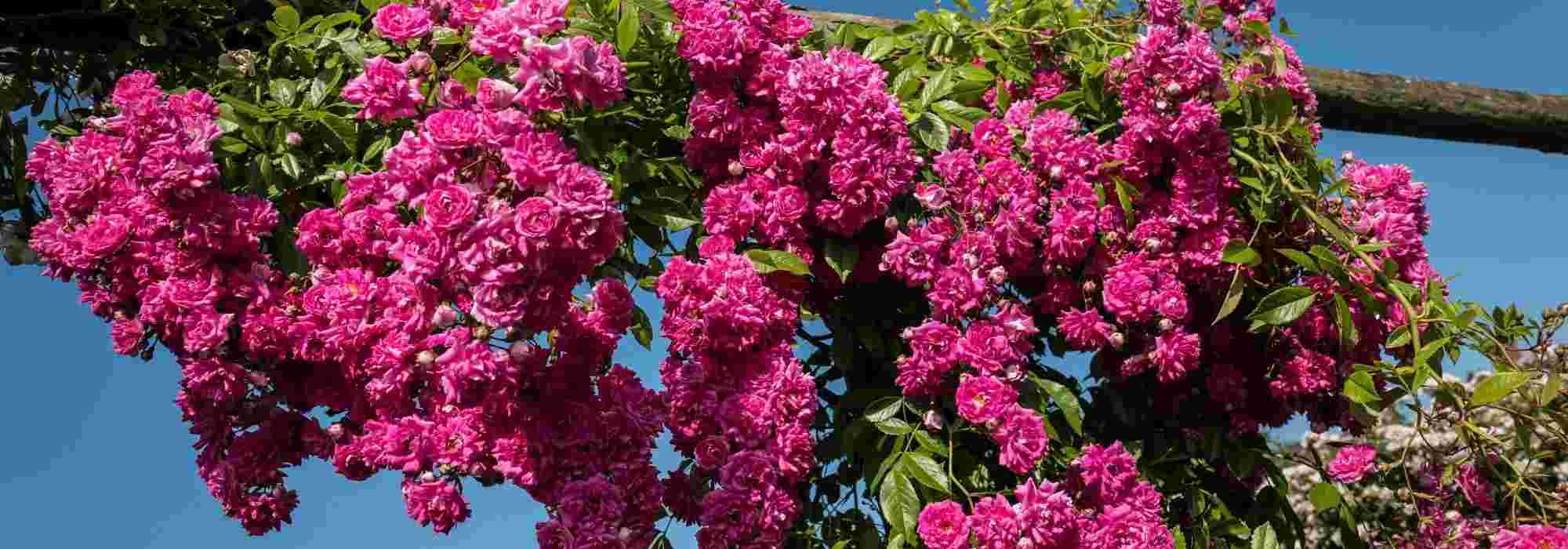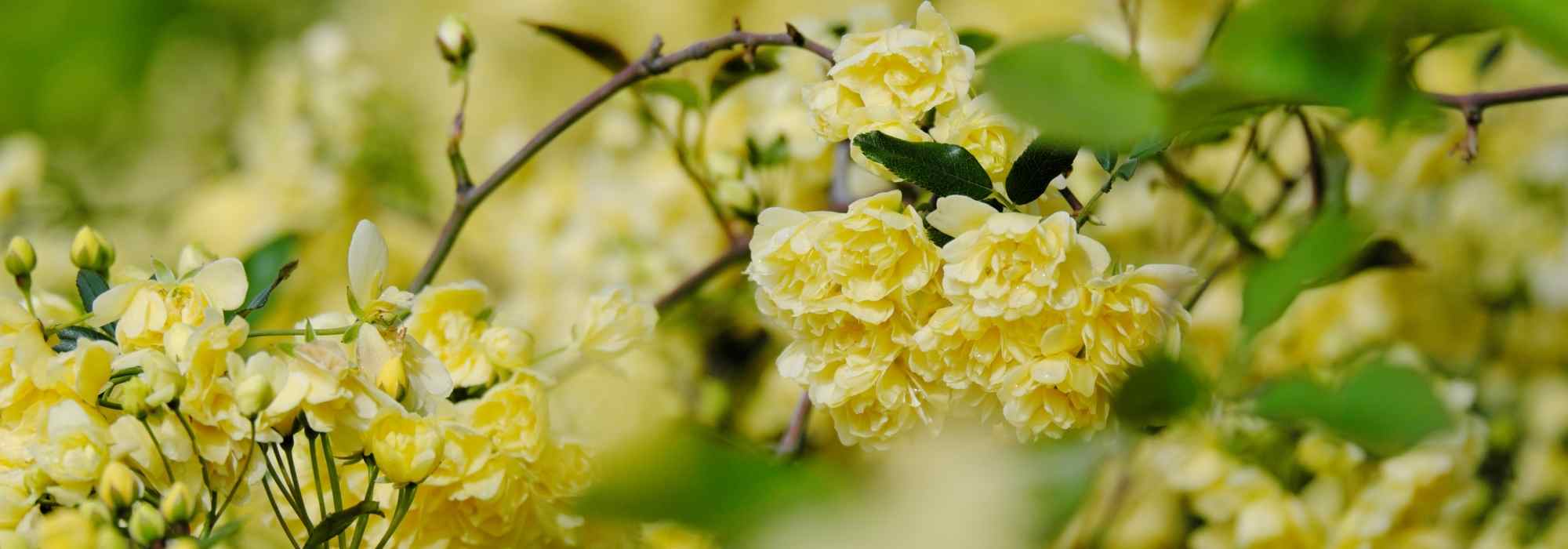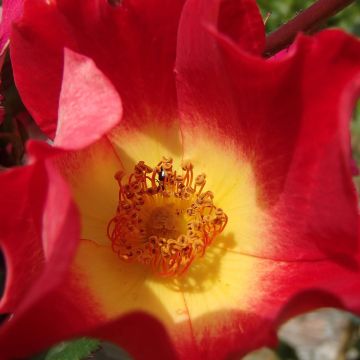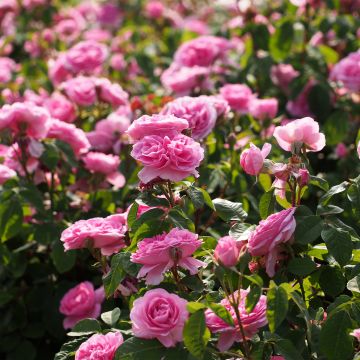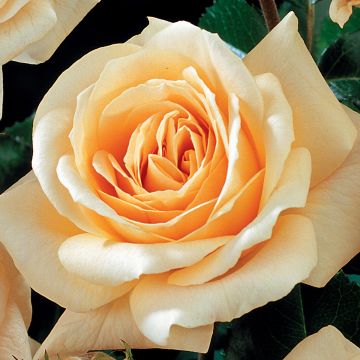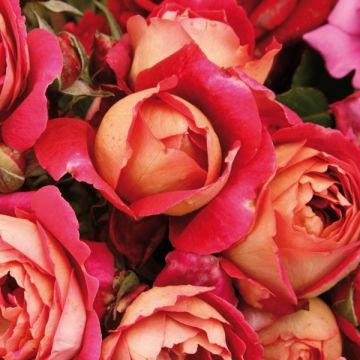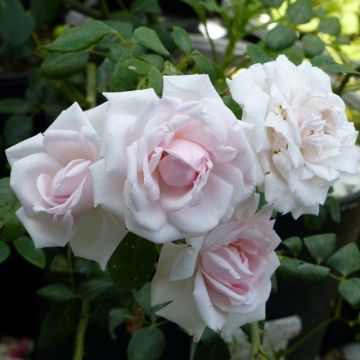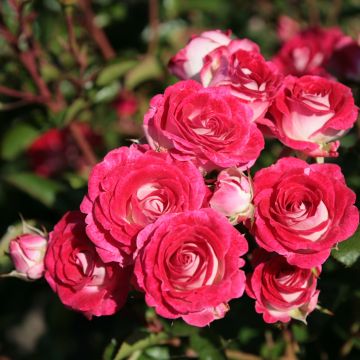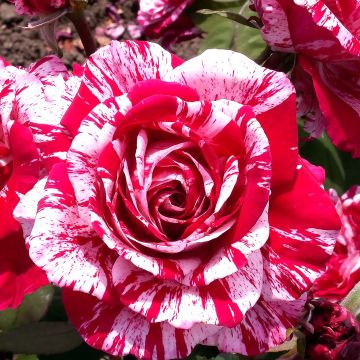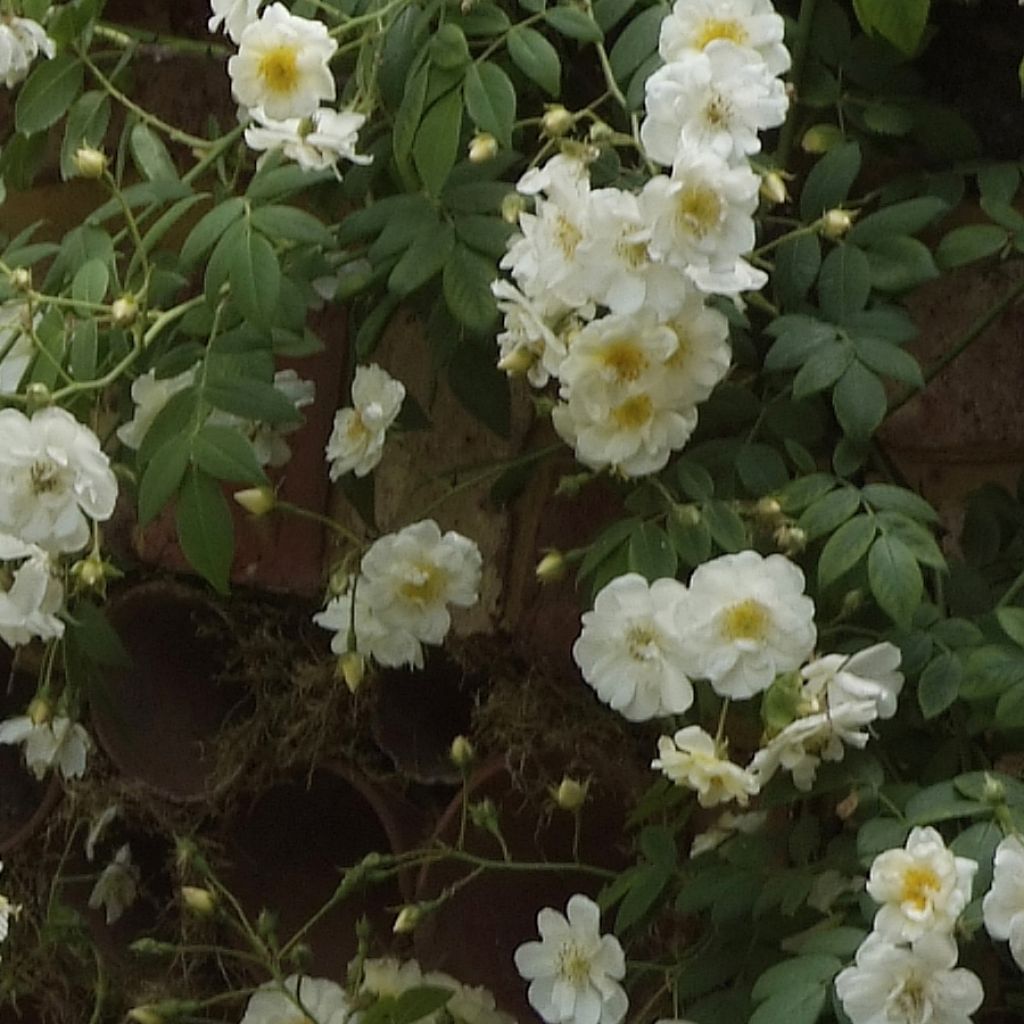

Rosa x wichuraiana 'Sander's White Rambler' - Rambling Rose
Rosa x wichuraiana 'Sander's White Rambler' - Rambling Rose
Rosa x wichuraiana Sander's White Rambler
Wichuraiana Rose, Memorial Rose, Rambler Rose
Thanks to the staff (for order preparation and shipping), the rose bush received is small but looks healthy to me. Planted close to a wall, I am now patiently waiting for it to take root... or not?
Thierry, 24/10/2024
Special offer!
Receive a €20 voucher for any order over €90 (excluding delivery costs, credit notes, and plastic-free options)!
1- Add your favorite plants to your cart.
2- Once you have reached €90, confirm your order (you can even choose the delivery date!).
3- As soon as your order is shipped, you will receive an email containing your voucher code, valid for 3 months (90 days).
Your voucher is unique and can only be used once, for any order with a minimum value of €20, excluding delivery costs.
Can be combined with other current offers, non-divisible and non-refundable.
Home or relay delivery (depending on size and destination)
Schedule delivery date,
and select date in basket
We guarantee the quality of our plants for a full growing cycle, and will replace at our expense any plant that fails to recover under normal climatic and planting conditions.

Description
Rosa Sander's White Rambler is a rambler rose among the best. Its healthy growth produces long, flexible branches covered with beautiful dark green and shiny foliage. In summer, it is laden with many small double rosettes, pure white, slightly scented, gathered in very tight clusters. Its vigour allows it to conquer tall trees, hide an unsightly construction that will disappear under a cascade of flowers, or cover the ground, creating a fantastic carpet. Unlike most rambling roses, it has a slight perpetual flowering.
This large rose, obtained by Sander and Sons in 1912 and selected from about 4000 seedlings, remains a reference among rambling roses. It easily reaches a height of 6m (20ft) with a spread of 4m (13ft). Its long stems are flexible and graceful, entirely covered with healthy, dark green and shiny foliage, contrasting with the pure white flowering. The flowers of this rambler form in July, then sporadically in September. They emerge on short shoots from the 2nd year as pure white buds. They open into snowy white rosettes, double, with over 40 petals, and measuring 3cm (1in) in diameter. They are gathered in very dense clusters along the flexible stems. Light despite its abundance, its exuberant flowering covers from the first year of cultivation the support provided to it. The small fruits that delight birds in the winter are fleshy false fruits called hips. They contain a large quantity of single-seeded achenes.
'Sander's White Rambler' is a beautiful and healthy rose known for its generous blooms and candid appearance. It belongs to the Liana family, making it perfect for filling large spaces and creating a natural, relaxed look. Thanks to its abundant foliage and flowers, it can even be used as ground cover. This makes it an excellent option for summer decorations.
The rose is versatile and can enhance the look of dead trees, fences, or buildings. Its unique charm can add a touch of romance to any outdoor space when trained on an arch near the terrace. The rose blooms almost all year round, making it a great companion for large-flowered clematis that can take over from summer to autumn.
Rosa x wichuraiana 'Sander's White Rambler' - Rambling Rose in pictures
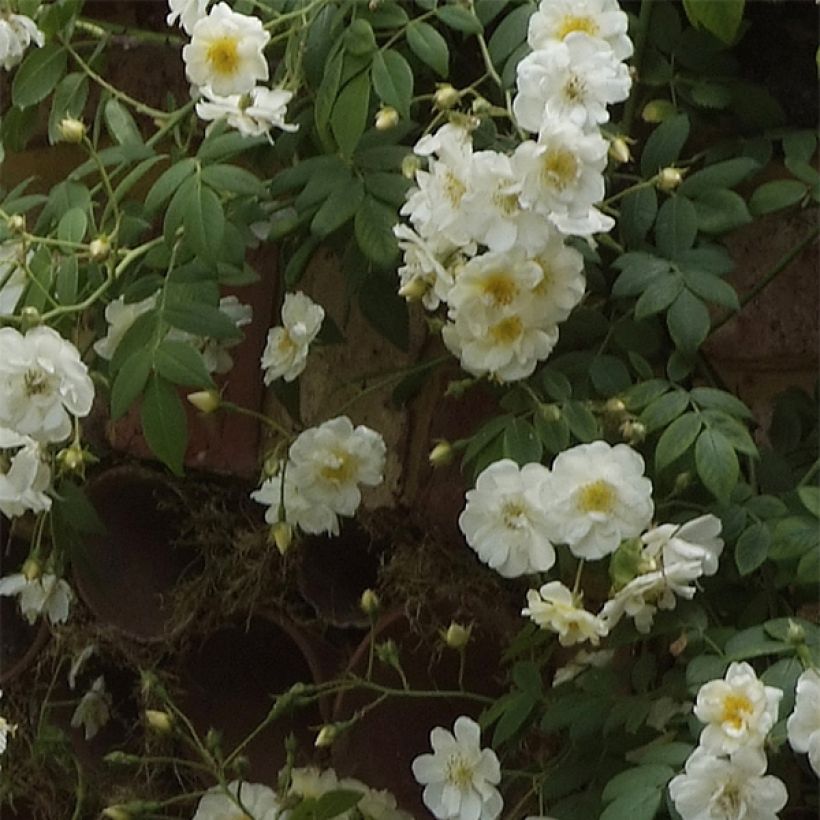

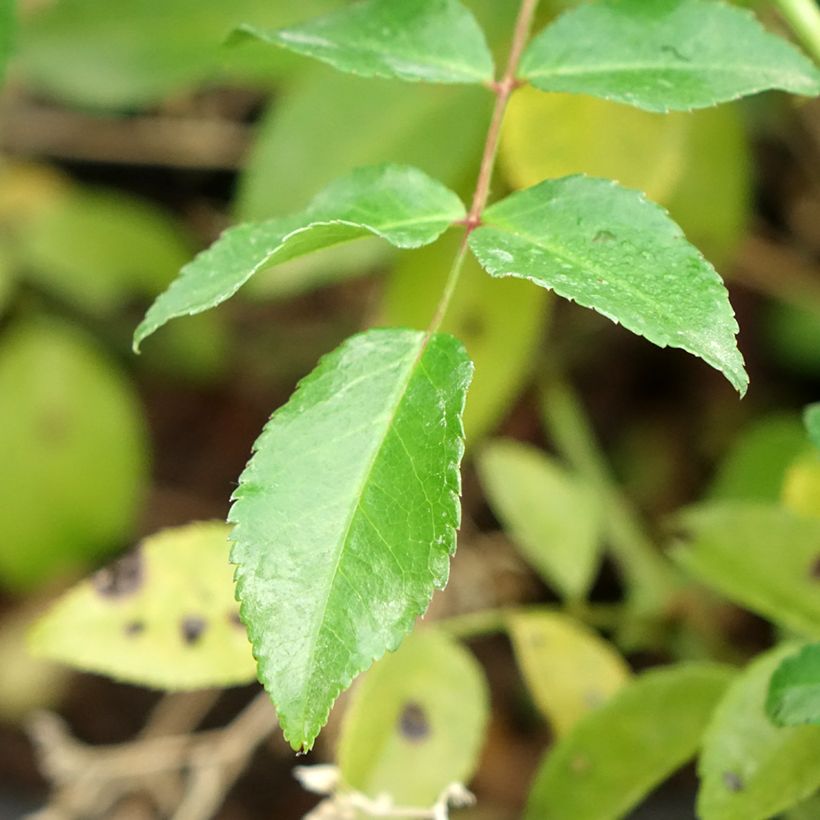

Plant habit
Flowering
Foliage
Botanical data
Rosa
x wichuraiana
Sander's White Rambler
Rosaceae
Wichuraiana Rose, Memorial Rose, Rambler Rose
Cultivar or hybrid
Planting and care
The 'Sanders White Rambler' rose is a versatile plant that can adapt to all types of soil, including heavy or sandy soil, as long as it is well-cared for and given enough water and nutrients. It thrives in well-drained ordinary soil and can tolerate both sunny and semi-shaded exposures.
It is best to plant this rose in autumn when the weather is still warm, but not freezing. The 2-year-old branches of the rose are the most floriferous, so it's useful to prune the stems that bloomed the previous year down to 3 or 4 buds or to 15 cm (6 inches). This will encourage new, strong stems to grow.
The rose is quite hardy and can resist temperatures down to -20°C (-4°F). If the branches freeze to the ground after a harsh winter, the rambler will regrow from the base in spring. It's a good idea to remove dead wood in winter and faded flowers if you don't want fruit formation. In spring, after the risk of frost has passed, you can do a light pruning if necessary.
If you have enough space, you can let the climbing roses grow freely. However, if you plant a climbing rose next to a living tree, the rose's root system will compete with that of the already well-established tree. To control watering, you can plant the rose in a large container with a drainage hole at the base of the tree. The tree's roots will not penetrate the container for at least a year. After a year, you can remove the container without disturbing the rose's root system, and the rose will have had time to develop its root system deeply and be more resistant.
Roses are often stained or unsightly at the end of summer, but it is not a problem for their development. These spots are not harmful to the rose but are natural.
Planting period
Intended location
Care
Planting & care advice
-
, onOrder confirmed
Reply from on Promesse de fleurs
Similar products
Haven't found what you were looking for?
Hardiness is the lowest winter temperature a plant can endure without suffering serious damage or even dying. However, hardiness is affected by location (a sheltered area, such as a patio), protection (winter cover) and soil type (hardiness is improved by well-drained soil).

Photo Sharing Terms & Conditions
In order to encourage gardeners to interact and share their experiences, Promesse de fleurs offers various media enabling content to be uploaded onto its Site - in particular via the ‘Photo sharing’ module.
The User agrees to refrain from:
- Posting any content that is illegal, prejudicial, insulting, racist, inciteful to hatred, revisionist, contrary to public decency, that infringes on privacy or on the privacy rights of third parties, in particular the publicity rights of persons and goods, intellectual property rights, or the right to privacy.
- Submitting content on behalf of a third party;
- Impersonate the identity of a third party and/or publish any personal information about a third party;
In general, the User undertakes to refrain from any unethical behaviour.
All Content (in particular text, comments, files, images, photos, videos, creative works, etc.), which may be subject to property or intellectual property rights, image or other private rights, shall remain the property of the User, subject to the limited rights granted by the terms of the licence granted by Promesse de fleurs as stated below. Users are at liberty to publish or not to publish such Content on the Site, notably via the ‘Photo Sharing’ facility, and accept that this Content shall be made public and freely accessible, notably on the Internet.
Users further acknowledge, undertake to have ,and guarantee that they hold all necessary rights and permissions to publish such material on the Site, in particular with regard to the legislation in force pertaining to any privacy, property, intellectual property, image, or contractual rights, or rights of any other nature. By publishing such Content on the Site, Users acknowledge accepting full liability as publishers of the Content within the meaning of the law, and grant Promesse de fleurs, free of charge, an inclusive, worldwide licence for the said Content for the entire duration of its publication, including all reproduction, representation, up/downloading, displaying, performing, transmission, and storage rights.
Users also grant permission for their name to be linked to the Content and accept that this link may not always be made available.
By engaging in posting material, Users consent to their Content becoming automatically accessible on the Internet, in particular on other sites and/or blogs and/or web pages of the Promesse de fleurs site, including in particular social pages and the Promesse de fleurs catalogue.
Users may secure the removal of entrusted content free of charge by issuing a simple request via our contact form.
The flowering period indicated on our website applies to countries and regions located in USDA zone 8 (France, the United Kingdom, Ireland, the Netherlands, etc.)
It will vary according to where you live:
- In zones 9 to 10 (Italy, Spain, Greece, etc.), flowering will occur about 2 to 4 weeks earlier.
- In zones 6 to 7 (Germany, Poland, Slovenia, and lower mountainous regions), flowering will be delayed by 2 to 3 weeks.
- In zone 5 (Central Europe, Scandinavia), blooming will be delayed by 3 to 5 weeks.
In temperate climates, pruning of spring-flowering shrubs (forsythia, spireas, etc.) should be done just after flowering.
Pruning of summer-flowering shrubs (Indian Lilac, Perovskia, etc.) can be done in winter or spring.
In cold regions as well as with frost-sensitive plants, avoid pruning too early when severe frosts may still occur.
The planting period indicated on our website applies to countries and regions located in USDA zone 8 (France, United Kingdom, Ireland, Netherlands).
It will vary according to where you live:
- In Mediterranean zones (Marseille, Madrid, Milan, etc.), autumn and winter are the best planting periods.
- In continental zones (Strasbourg, Munich, Vienna, etc.), delay planting by 2 to 3 weeks in spring and bring it forward by 2 to 4 weeks in autumn.
- In mountainous regions (the Alps, Pyrenees, Carpathians, etc.), it is best to plant in late spring (May-June) or late summer (August-September).
The harvesting period indicated on our website applies to countries and regions in USDA zone 8 (France, England, Ireland, the Netherlands).
In colder areas (Scandinavia, Poland, Austria...) fruit and vegetable harvests are likely to be delayed by 3-4 weeks.
In warmer areas (Italy, Spain, Greece, etc.), harvesting will probably take place earlier, depending on weather conditions.
The sowing periods indicated on our website apply to countries and regions within USDA Zone 8 (France, UK, Ireland, Netherlands).
In colder areas (Scandinavia, Poland, Austria...), delay any outdoor sowing by 3-4 weeks, or sow under glass.
In warmer climes (Italy, Spain, Greece, etc.), bring outdoor sowing forward by a few weeks.


































